It was six days into our sheep tour through Southern France, and some of us were beginning to feel a bit road weary. France, while stunningly beautiful and charming, presented us with a mirage of logistical challenges such as curvy roads, “unique” French cuisine, overly long meal times, and of course, the language barrier. We learned very early into our journey that we could not predict what each day would bring, and we would be better suited to simply sit back and take it all in stride.
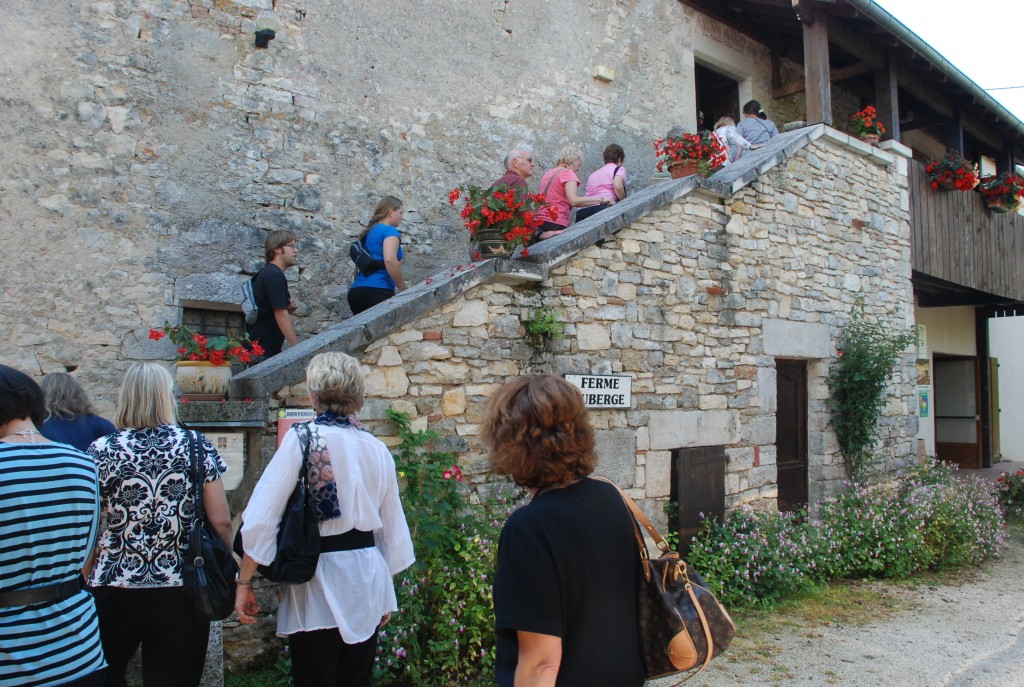
Quaint and beautifully French, our group of 30 ascended the stone staircase to the family run restaurant.
Our wayward struggles aside, France was bestowing upon us an endless dose of warm sunshine. The mid-September air was pleasant and crisp, making our time spent at sheep farms and events even more enjoyable. The sunshine intensified on the sixth day as we climbed high into the hill country near Rocamadour (Lot Valley) to visit La Borie d’Imbert, a dairy goat farm that produced a variety of goat cheese. Their goat barn and milking facility was clean, equipped with the latest technology, and the goats (in true goat form) were friendly and curious creatures.
We had a lovely morning at La Borie d’Imbert, but the real treat for the day was yet to come. After a wine and cheese tasting, we boarded our air conditioned coach and let the warm breeze push us down a lonely dirt road to our lunch destination. Our coach rolled up alongside a stone barn, which flanked another stone barn, that was somewhat connected to a 2-story stone house. The sign near the entrance to the house said “Ferme Auberge”, or farm restaurant.
Extraneously cautious, we climbed the exterior stairs slowly and in single file. We were met at the top by the Castagné family. Faces glowing with happiness, they showed us to the large dining room, which was decorated in typical French Country decor. The atmosphere was warm and inviting, and we settled into our seats at long oak tables in front of a grand fireplace.
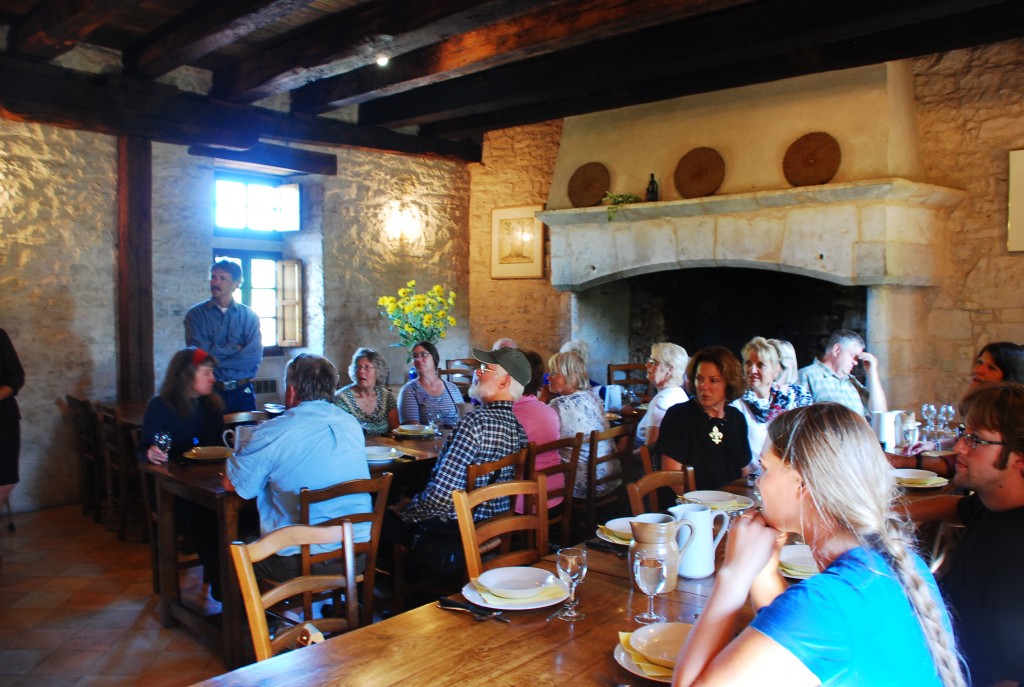
As we settled into the dining room of the restaurant, we couldn’t help but feel like we were friends of the Castagné family.
The bustle of the kitchen could be heard faintly from another room as Jean-Luc Castagnétold us the story of the location. Known as Moulin à Huile de Noix, the building in which we were sitting was once a hunting lodge, but now operated as both a farm restaurant and a walnut oil mill (which we were invited to tour after the meal). To be considered an official Ferme Auberge, he explained, 80% of the ingredients on the menu of the establishment must be produced on location, and the remaining 20% had to be sourced locally. The number of farm restaurants in France was on the rise, especially in regions such as the Lot Valley, where foie gras, lamb, wine and cheese were amply produced. As Jean-Luc spoke, we couldn’t help but notice his hands, which were deeply stained with walnut oil. This was the real thing—a refreshingly honest experience and a chance to taste fresh French cuisine.
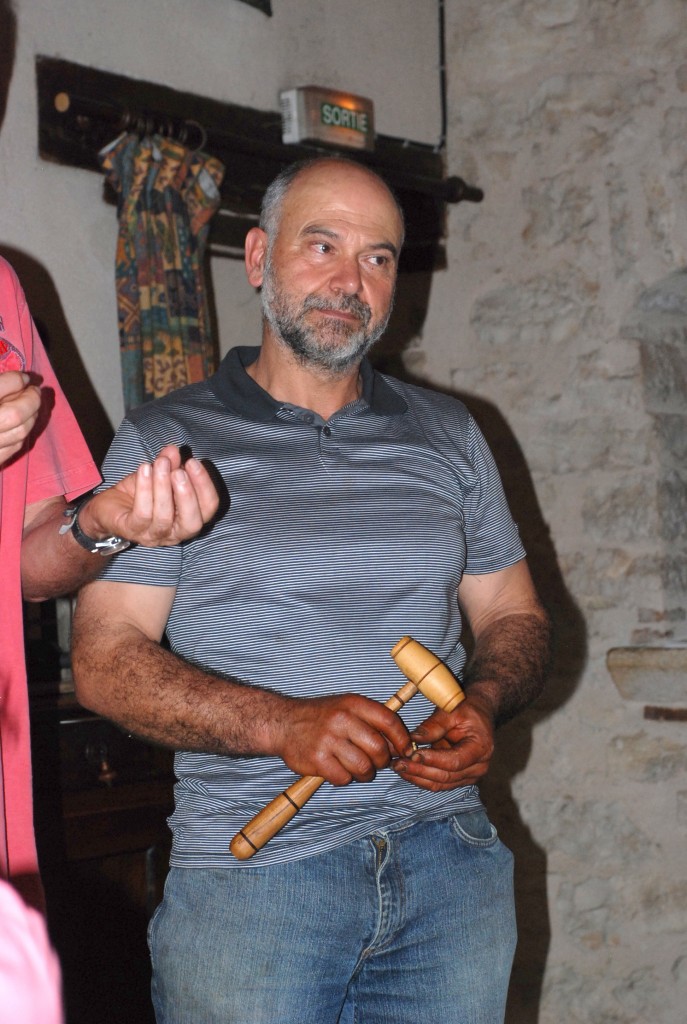
Mr. Castagné, with a walnut and mallet he brought up from the mill below. Note his arms and hands, stained from the walnut oil.
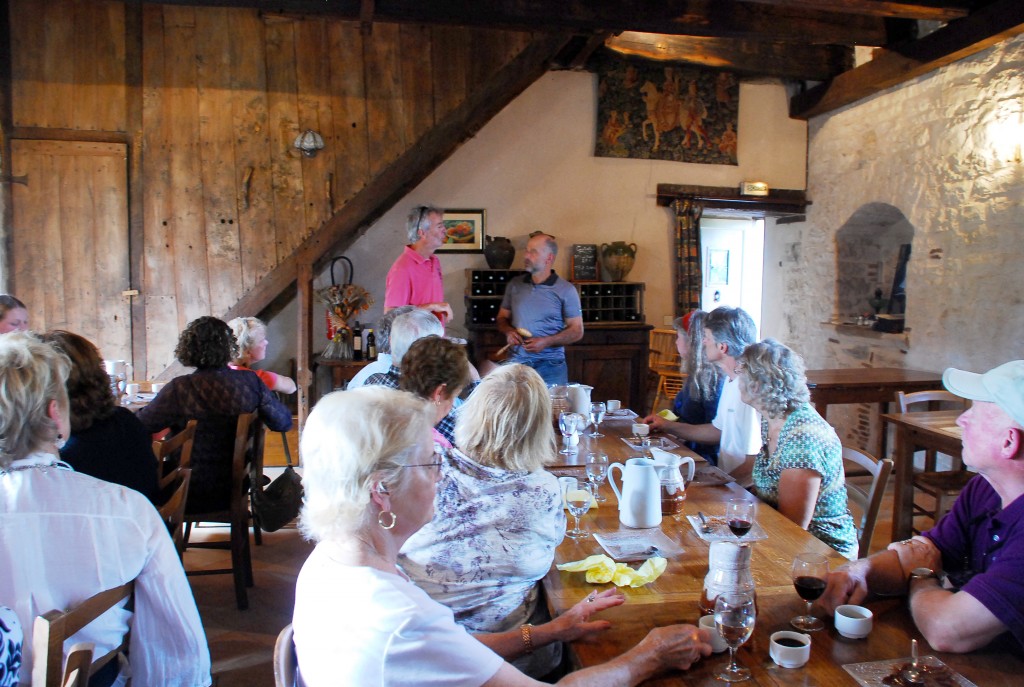
As Mr. Castagné addressed our group, our French tour guide (in pink) translated his message. This was one instance where the true character of a stop was not lost in translation.
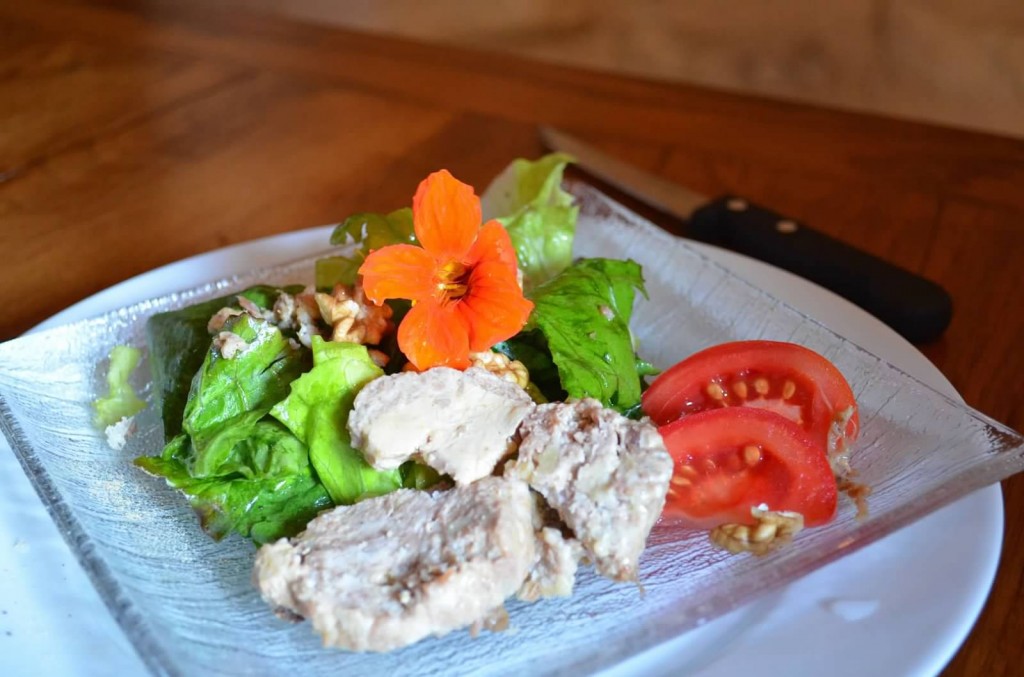
Our first course, beautifully presented and absolutely delicious! Photo by Carrie & Maren Boyer, UT.
Soon our first course, a cheerful salad, was served by Mrs. Marie-Claude Castagné and her staff. Trimmed with a hibiscus blossom, fresh green leaves were sprinkled with walnuts and tossed lightly in a walnut oil dressing. The fresh bread and paté of foie gras were also perfectly prepared. We had been served a lot of salads in France (and a lot of paté, for that matter), but this was by far the best.
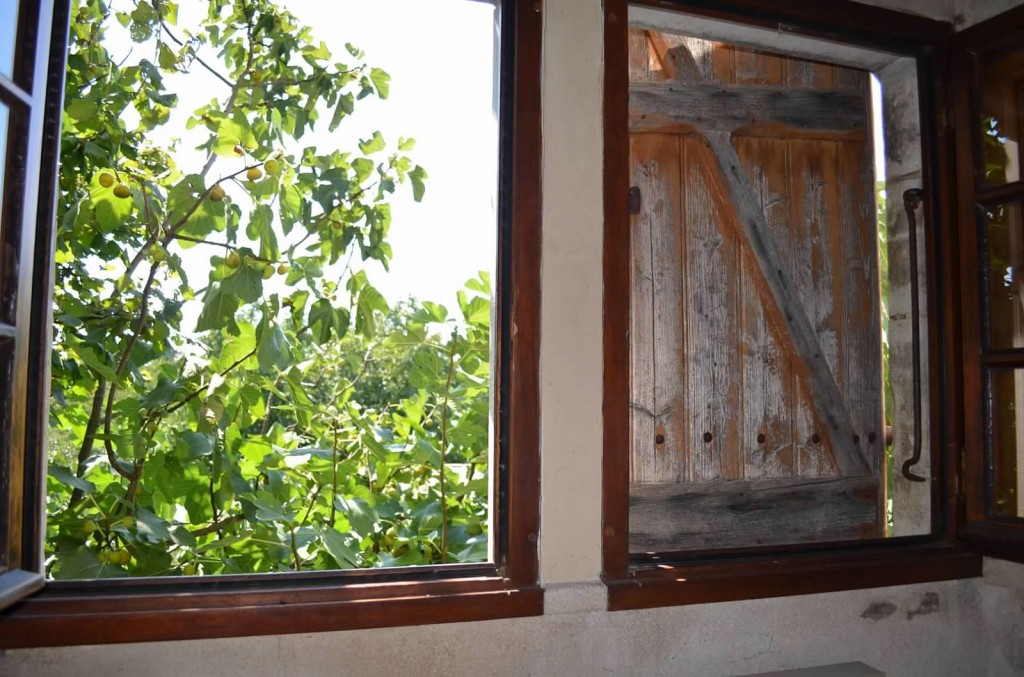
Who could resist fresh figs growing within arms reach? Photo by Carrie & Maren Boyer, UT.
A gentle breeze made its way into the dining room through ancient windows that were flanked by large wooden shutters. Stan Potratz, Premier’s owner, reached out and picked some figs from an adjacent tree. In true family-style fashion, we passed them around the room, each person taking a bite. Soon our main course arrived. We passed the big platters of food down the long oak tables. The roast lamb, hearty potatoes and vegetables were top-notch, and walnut wine apertif complemented our overflowing plates. We were a world away from the high-end dining of Paris, but this seemed to be a better “fit”. In some way, knowing that we were eating farm fresh food was comforting, and made us feel just a bit closer to home.
After our food settled, we made our way down to the walnut oil mill. We watched in awe as a millstone crushed the walnut kernels and a hydraulic press extracted the oil. It was fascinating to watch the millstone turn just quickly enough to be a hazard to stray fingers. The smell of the pressed walnuts was intoxicating, and several members of our group took advantage of the walnut oil and walnut wine that Marie-Claude had for sale in the next room.
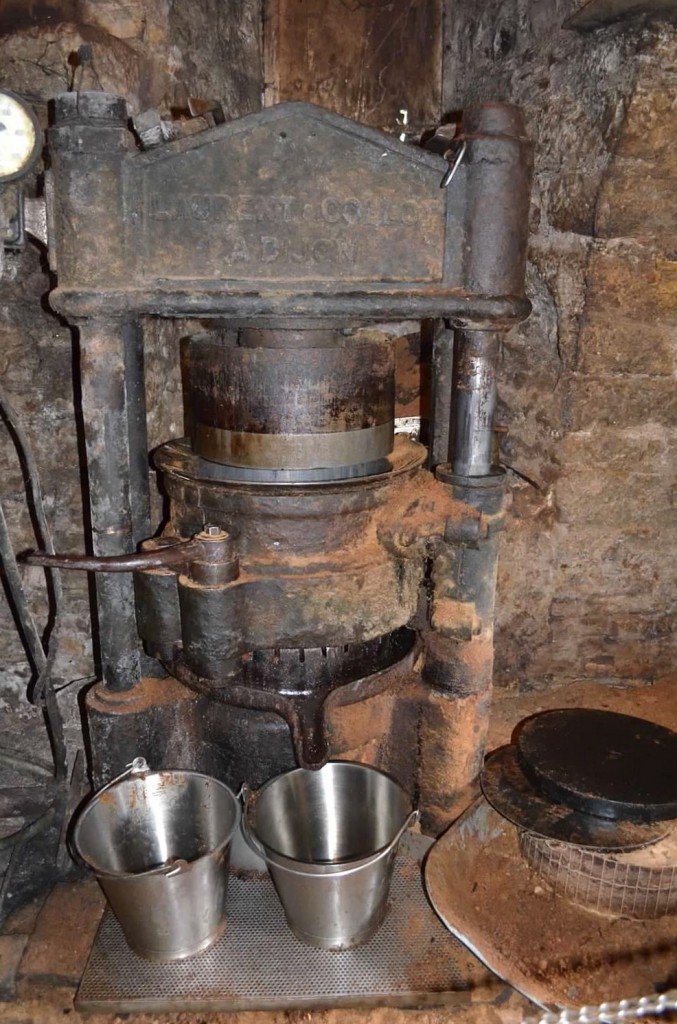
The hydraulic press expressed the walnut oil using a process that has, obviously, been in place for quite some time.
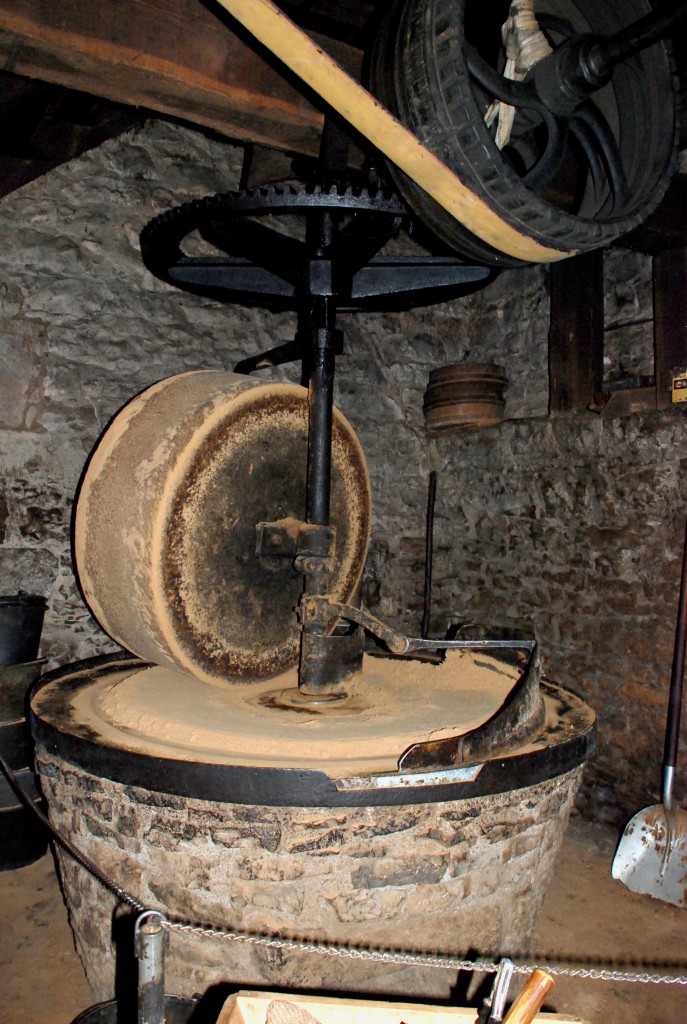
The large, ancient-looking millstone at work.
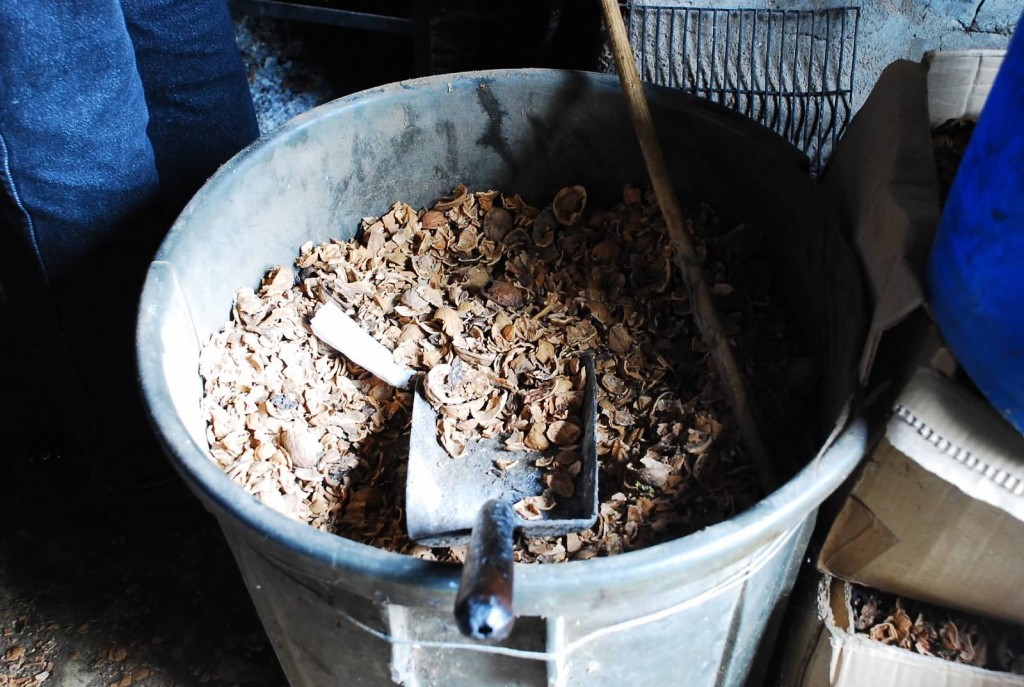
Discarded walnut hulls. Would this photo look the same if it was taken 100 years ago?
Too soon it was over, and we were boarding our coach to roll on to our next destination. Forever pressed to keep on schedule, we watched the Ferme Auberge disappear from sight as our skilled driver backed the coach up the long driveway. As quickly as it had appeared, it was gone.
The coach was unusually quiet as we turned onto the hard surface road—perhaps due to our full stomachs, or perhaps because we were still marveling at how unexpectedly fantastic our lunch stop was. Such a simple (though not unique) concept—a farm restaurant—was executed so perfectly. The secret ingredient? Honesty. The Castagné family had given us a taste of true South-of-France cuisine, hospitality, atmosphere and decor, all the while making us feel like we were old family friends. So as our coach lumbered on to our next stop, a picturesque village that would no doubt be filled with souvenir shops, ice cream stands and cobblestone streets, it was comforting to know that we had found hospice at Moulin à Huile de Noix.
Maybe we all had stains on our hands—carrying with us a little dirt under our fingernails from our operations back home. It just took a delicious meal, a warm breeze, and a fig or two to make us realize it.


